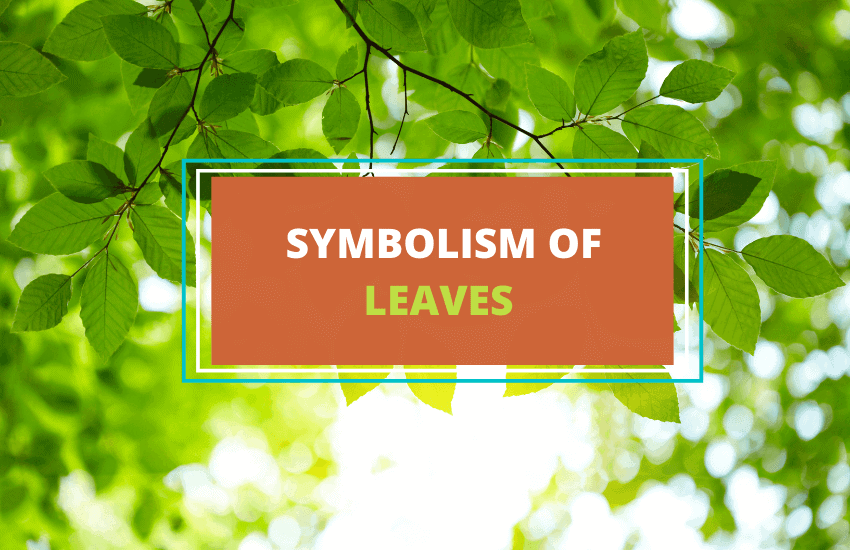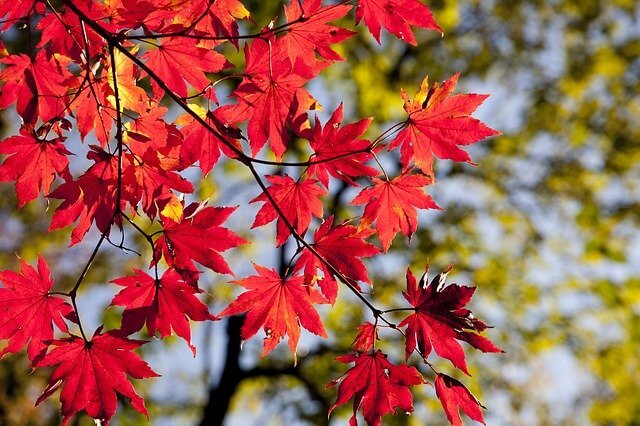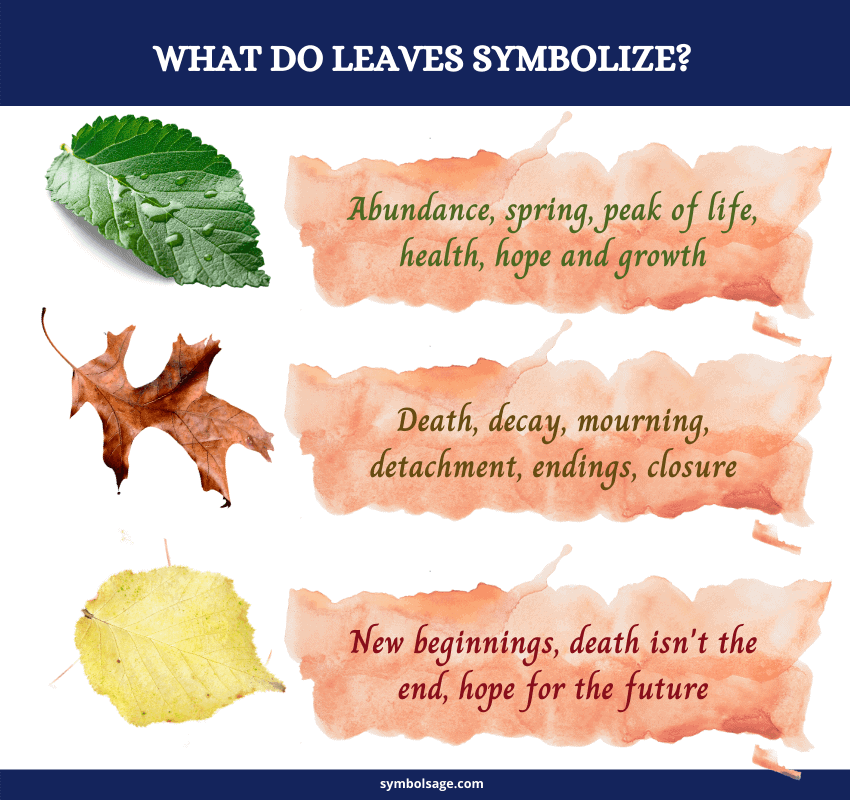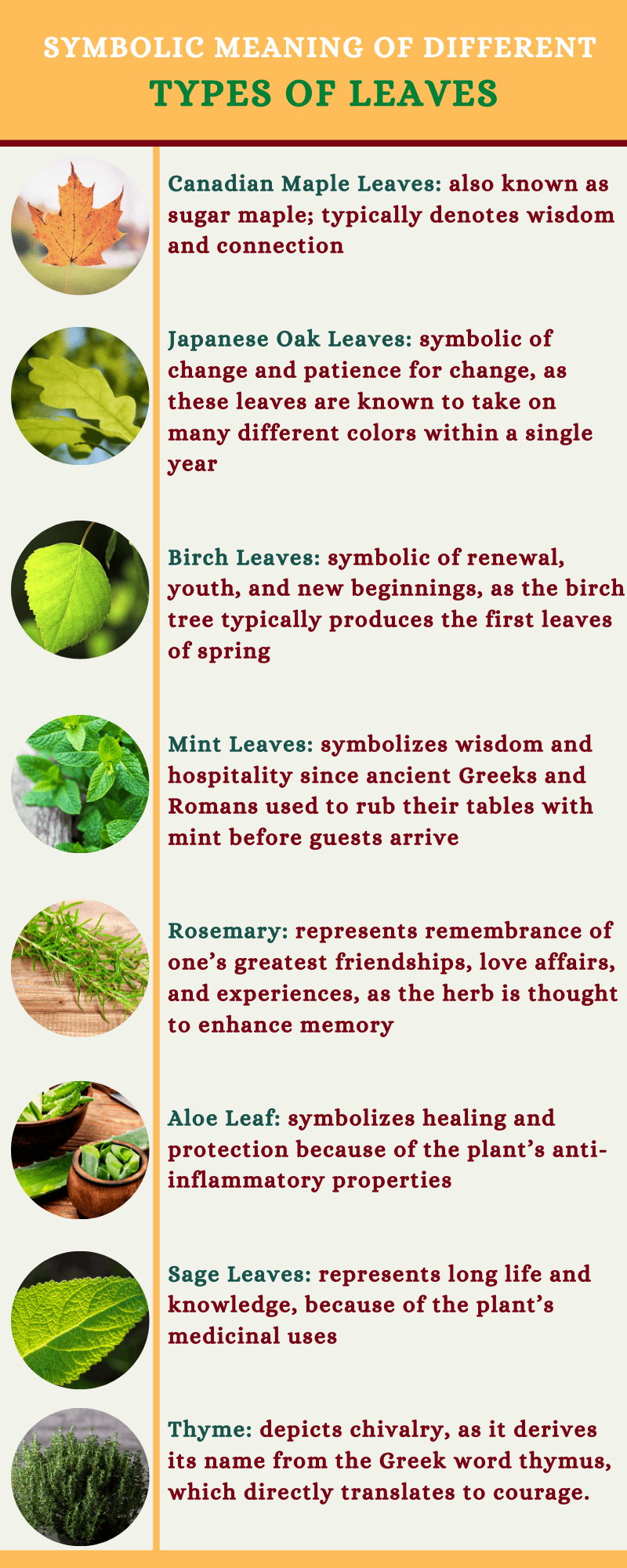
Table of Contents
Leaves are one of the most mundane yet significant things of nature and of humankind. We use leaves for food, paper, clothing, medicine, and many other things but apart from practical uses, leaves also have acquired symbolic interpretations over time. Let’s take a look at the representations of leaves in various cultures around the world.
Leaf Symbolism in Religion
The symbolism of leaves varies in polytheistic and monotheistic traditions. But at the end of the day, all religions regard leaves as special items because of how it plays a small yet important role in the growth of a plant.
In Greek Mythology
The most important leaf for the Greeks was the laurel leaf which represented Daphne, the beautiful daughter of a river god and the love interest of Apollo, the Greek god of the Sun, healing, and music. However, Daphne rejected each and every one who pursued her, including Apollo himself. To protect her from further advances, she prayed for her father’s help. The river god obliged and transformed her into a laurel. This did not stop Apollo from admiring his lady love and he used laurel leaves to represent poets and triumphs of the Greeks.
In Baha’i faith
For the believers of the Baha’i faith who value the unity of people, each leaf represents a person’s relationship to the community and to nature as a whole. The highest understanding is that that you’re all interdependent with nature and the environment. It represents a person’s place in a group.
In Judaism
In Jewish circles leaves are compared to individual people. They put emphasis on the person’s relationship to the community, which is symbolized by the tree where the leaves are connected.
Leaves are also considered to represent the fragility and durability of human life in the sacred texts of Judaism. Judaism associates leaves to how weak humans are because of their susceptibility to the powers of nature and to the possibility of a Supreme Being controlling each facet of human life.
In Christianity
For Christians, leaves symbolize hope amid hardships and difficulties in life. Christians are hopeful because they believe that everything happens according to the will of God. This is seen in the form of the olive leaf that gave Noah hope of life after the Great Flood sent by God to cleanse the Earth of all sinners.
Christianity also links leaves to acts of shame and modesty. This association can be traced in the story of Adam and Eve. The couple decided to wear clothes or at least cover their private parts with leaves after committing the Original Sin and eating from the Fruit of Knowledge.
Leaves Symbolism in Literature and Popular Culture

- Nature – In the most literal sense, leaves symbolize nature because it is essential for all forms of life on Earth with its ability to harness the power of the sun all on their own.
- Growth or Rebirth – Turning over a new leaf is one popular idiom in the English language, and it means positive change or growth.
- Life and Energy – In the same way that it represents nature, a leaf also symbolizes life and energy because it provides for the life on the planet.
- Hidden Danger – A leaf can also symbolize hidden dangers because usually there will be predators that hide beneath the bushes or leaves to overwhelm their prey.
- Fertility – People associate leaves with fertility because oftentimes, a plant bears fruit where there is an abundance of leaves that catches all necessary nutrition from the Sun.
- Death and Somberness – Leaves represent the inevitability of human death just like how they wither and day with the passing of each season.
Colors of Leaves and What they Mean

As leaves follow a regular life cycle, they come in different colors that reflect how far along they are in terms of the inevitable aging of all living things. For instance, it is believed that dreaming about leaves may either be a good or a bad omen, depending on what color they were when they appeared in your dream.
Green Leaves
Green leaves represent abundance and the flourishing of life. Bright green leaves remind us of spring and the peak of life, so dreaming of leaves in this color or wearing a green-leaf charm channels hope, growth, abundance, and health.
Brown Leaves
When leaves turn brown, it serves as a clue to plant owners that they are about to wilt and will soon fall to the ground. Therefore, brown leaves symbolize death, decay, and the coming of cold months, which in turn represent mourning, detachment, and endings.
Thus, symbolically, brown leaves symbolize death or closure. While dreaming of brown leaves does not necessarily mean death is coming, it might be a reminder to cherish what you currently have, may it be in terms of people or opportunities, because nothing lasts forever and the end will come for us all.
Gold Leaves
When leaves fall to the ground they die and turn gold, but the nutrients that are still inside them do not simply vanish or evaporate. Instead, they are absorbed by the soil and redistributed to the roots of nearby trees, thus helping them grow healthier leaves for the next season.
This is symbolic of how death is not entirely the end. As the great Albus Dumbledore pointed out, death is but the next great adventure. Golden leaves thus remind us to always look at the bigger picture to realize that endings are not necessarily bad and may lead to better things in the future.
Different Leaves and Their Representations
Aside from the color of leaves, it is also important to take note of the kind and species of leaves because different kinds of leaves carry different meanings and symbols with them. Some of the definitions are derived from lore, popular media representation, or even the specific behavior and care of the plants they belong to.
Here are some of them:
- Canadian Maple Leaves: also known as sugar maple; typically denotes wisdom and connection
- Japanese Oak Leaves: symbolic of change and patience for change, as these leaves are known to take on many different colors within a single year
- Birch Leaves: symbolic of renewal, youth, and new beginnings, as the birch tree typically produces the first leaves of spring
- Mint Leaves: symbolizes wisdom and hospitality since ancient Greeks and Romans used to rub their tables with mint before guests arrive
- Rosemary: represents remembrance of one’s greatest friendships, love affairs, and experiences, as the herb is thought to enhance memory
- Aloe Leaf: symbolizes healing and protection because of the plant’s anti-inflammatory properties
- Sage Leaves: represents long life and knowledge, because of the plant’s medicinal uses
- Thyme: depicts chivalry, as it derives its name from the Greek word thymus, which directly translates to courage.

Wrapping Up
There are definitely endless lessons to be learned from leaves and their role in nature. They hold symbolic meaning depending on the type of leaf, the color of leaf and the culture or religion from which they’re viewed.








